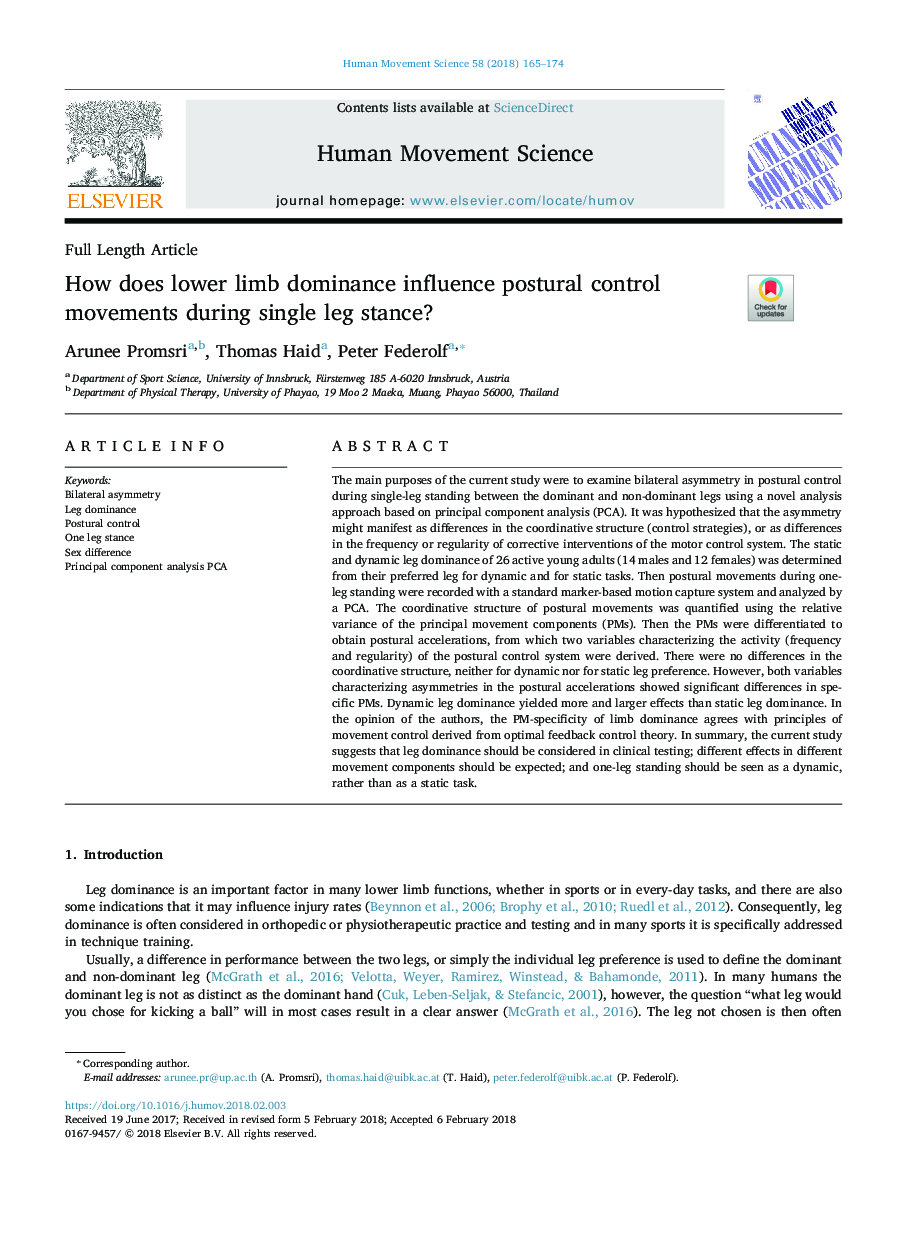| Article ID | Journal | Published Year | Pages | File Type |
|---|---|---|---|---|
| 7290929 | Human Movement Science | 2018 | 10 Pages |
Abstract
The main purposes of the current study were to examine bilateral asymmetry in postural control during single-leg standing between the dominant and non-dominant legs using a novel analysis approach based on principal component analysis (PCA). It was hypothesized that the asymmetry might manifest as differences in the coordinative structure (control strategies), or as differences in the frequency or regularity of corrective interventions of the motor control system. The static and dynamic leg dominance of 26 active young adults (14 males and 12 females) was determined from their preferred leg for dynamic and for static tasks. Then postural movements during one-leg standing were recorded with a standard marker-based motion capture system and analyzed by a PCA. The coordinative structure of postural movements was quantified using the relative variance of the principal movement components (PMs). Then the PMs were differentiated to obtain postural accelerations, from which two variables characterizing the activity (frequency and regularity) of the postural control system were derived. There were no differences in the coordinative structure, neither for dynamic nor for static leg preference. However, both variables characterizing asymmetries in the postural accelerations showed significant differences in specific PMs. Dynamic leg dominance yielded more and larger effects than static leg dominance. In the opinion of the authors, the PM-specificity of limb dominance agrees with principles of movement control derived from optimal feedback control theory. In summary, the current study suggests that leg dominance should be considered in clinical testing; different effects in different movement components should be expected; and one-leg standing should be seen as a dynamic, rather than as a static task.
Keywords
Related Topics
Life Sciences
Neuroscience
Cognitive Neuroscience
Authors
Arunee Promsri, Thomas Haid, Peter Federolf,
